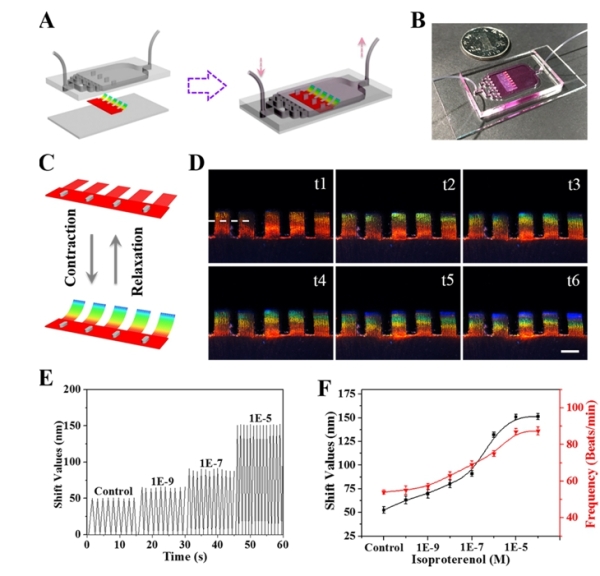
Recently, the team leading by Prof. Zhao Yuanjin from State Key Laboratory of Bioelectronics in School of Biological Sciences & Medical Engineering, SEU made important progress in organ-on-a-chip research. The research results were published in the international top journal Science Robotics under the title of “Bioinspired living structural color hydrogels” on March 29, 2018. This is the first article published in this journal which was written by Chinese scholars independently.
Structural color materials from existing natural organisms have been widely studied to enable artificial manufacture. Variable iridescence has attracted particular interest because of the displays of various brilliant examples. Existing synthetic, variable, structural color materials require external stimuli to provide changing displays, despite autonomous regulation being widespread among natural organisms, and therefore suffer from inherent limitations. Inspired by the structural color regulation mechanism of chameleons, the team presents a conceptually different structural color material that has autonomic regulation capability by assembling engineered cardiomyocyte tissues on synthetic inverse opal hydrogel films. The cell elongation and contraction in the beating processes of the cardiomyocytes caused the inverse opal structure of the substrate film to follow the same cycle of volume or morphology changes. This was observed as the synchronous shifting of its photonic band gap and structural colors. Such biohybrid structural color hydrogels can be used to construct a variety of living materials, such as two-dimensional self-regulating structural color patterns and three-dimensional dynamic Morpho butterflies. These examples indicated that the stratagem could provide an intrinsic color-sensing feedback to modify the system behavior/action for future biohybrid robots. In addition, by integrating the biohybrid structural color hydrogels into microfluidics, we developed a “heart-on-a-chip” platform featuring microphysiological visuality for biological research and drug screening. This biohybrid, living, structural color hydrogel may be widely used in the design of a variety of intelligent actuators and soft robotic devices.

The first author of the paper is doctoral student Fu Fanfan. The corresponding author is Prof. Zhao Yuanjin. The related work was supported by National Outstanding Youth Science Foundation, Jiangsu Science Fund for Distinguished Young Scholars, and funds for State Key Laboratory of Bioelectronics.

